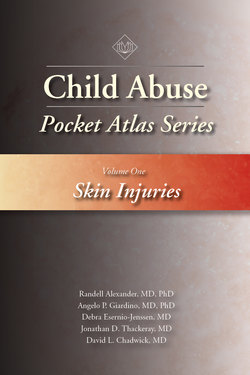Читать книгу Child Abuse Pocket Atlas, Volume 1 - Randell Alexander MD PhD - Страница 8
На сайте Литреса книга снята с продажи.
ОглавлениеPREFACE
In the US, there is an attitude of tolerance of parental violence toward children. It is not uncommon to hear caregivers say “Spare the rod, spoil the child” when justifying corporal punishment. This phrase is often misquoted and misinterpreted from Proverbs 13:24: “He who spareth the rod hateth his son: but he that loveth him correcteth him be times.” Most theologians would explain that this passage’s true meaning is about discipline, a word whose root is “disciple,” which means teacher. Parents need to teach their children right from wrong, so that they develop a strong moral character. What does it say about society when an adult who walks into a bar and slaps another patron across the face may be charged with assault, but a parent in a supermarket who slaps their child is exercising their parental right?
Many states still allow a parent to physically discipline a child by striking him/her with an object; other states specify that the object can only strike a child’s thighs or buttocks as long and cannot leave a bruise; and some states allow for bruising, as long as it is not excessive. What does that mean and who makes that decision?
Corporal punishment is not effective. It teaches children that those who are bigger than you are entitled to hurt you. It encourages children to lie in order to avoid physical pain. And most caregivers are not in control when they are physically disciplining a child. They are angry and frustrated. As a result, children are injured, sometimes fatally. In contrast, the American Academy of Pediatrics has a guideline about when inflicted skin injuries constitute abuse: almost any bruise, however small.
Nineteen states allow corporal punishment in public schools some do not even require parental permission. This practice is both demeaning and dangerous, and it has not been shown to be effective. It is worth noting that 5 out of the top 7 states with the highest rates of maltreatment deaths allow corporal punishment in schools.
Although most childhood burns result from inadequate supervision, inflicted burns are a particularly heinous form of physical abuse. Whether immersing an infant or child in scalding water or applying a hot object to their skin, one has to assume that the intent of the caregiver was purely to inflict pain. Burns are not only painful, they can leave permanent scarring, a reminder of abuse.
It has been said, “It takes a village to raise a child.” In order to effect change, it must take a nation to protect a child. We have come a long way since the New York Society for the Prevention of Cruelty to Children was established in the late nineteenth century. There are now serious child abuse laws, improved mandated child abuse curricula for daycare professionals and health care providers, increased training on recognizing child maltreatment for law enforcement and child protective services investigators, and since 2009, there is a new American Board of Pediatrics subspecialty, Child Abuse Pediatrics. We need to recognize that child abuse and neglect is the most important health problem affecting the future of our nation and take action to prevent it.
David L. Chadwick, MD
Randell Alexander, MD, PhD, FAAP
Angelo P. Giardino, MD, PhD, MPH, FAAP
Debra Esernio-Jenssen, MD, FAAP
Jonathan D. Thackeray, MD, FAAP
